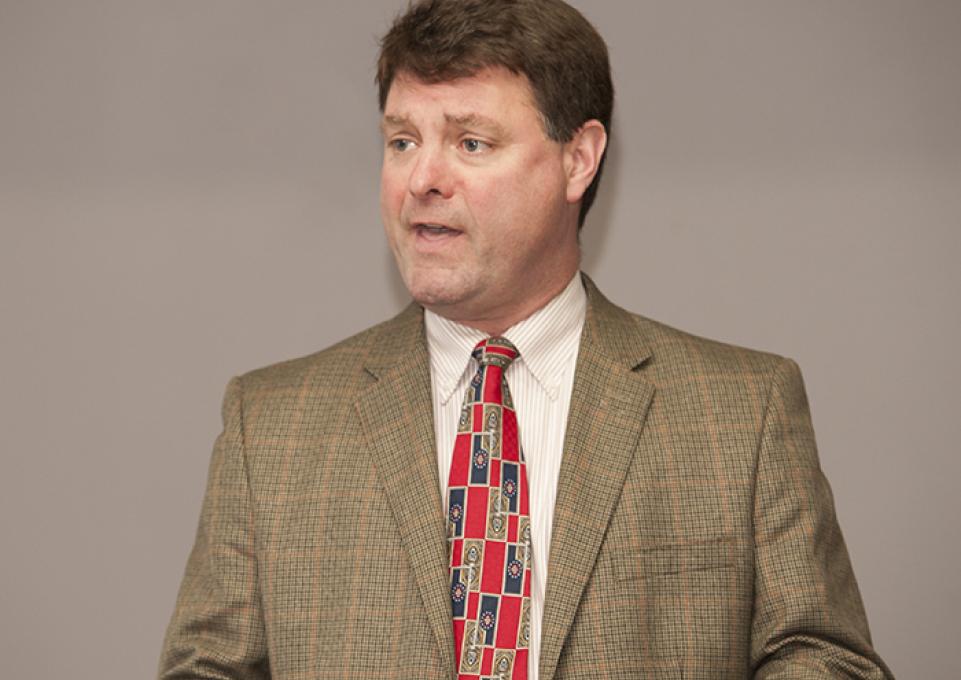
One hundred years ago this April, the United States entered World War I.
“Most Americans wanted to stay out of the conflict, and President Woodrow Wilson tried to avoid it,” said Andrew Nicholls, professor and chair of history and social studies education. “German immigrants didn’t want to fight with Germany; Irish immigrants didn’t want to support England.” In addition, the United States was not yet a world military power.
A number of events changed both government policy and public opinion. In 1914, when the war started in Europe, Great Britain became the primary source of information by cutting transatlantic cables from Germany to the United States. “The Germans didn’t help themselves,” said Nicholls. “At various points during the war, especially during the winter and spring 1917, their submarines attacked neutral and civilian ships. And in February 1917, America learned that Germany asked Mexico to become its ally.”
What caused the war in the first place? The answers have become more complex over the last hundred years. “As time goes by, we uncover more facts, we look at them differently, and we get some distance from the event,” said Nicholls. “In the first decade of the twentieth century, the world was more fluid and less suspicious—you didn’t need a visa to travel. But international tensions existed, and World War I revealed them. For a long time, historians argued that the war was a tragic accident, partly because it was so catastrophic that nobody wanted any share of the blame. Germany was held responsible because other nations believed Germany had been preparing to wage war. Later historians have argued that Germany’s European ambitions may have been relatively benign, and that everybody was drunk on the idea of national honor. Everybody was complicit.”
World War I shaped the world we know today. “The United States emerged as a global power after the war,” said Nicholls. “Britain and France carved up and created much of what we would recognize in the the Middle East, with its attendant regional problems as we now know them.”
Modern warfare also emerged in World War I with an unprecedented use of technology. Besides using poison gas on a wide scale for the first time, the first recorded kill in aerial combat occurred when an Austrian pilot took down a Russian pilot in September 1914. Air power was used to photograph targets and bomb industrial centers.
America declared war in 1917, but didn’t deploy most of its troops to Europe until the summer of 1918. The war ended on November 11, 1918, at 11:00 a.m., now known as Veterans Day in the United States and Remembrance Day in the British Commonwealth, which includes Canada.
Nicholls, whose research includes North American colonial history, noted that Canada was still a British dominion when England declared war in August 1914. “Taking part in World War I shaped Canada’s history,” Nicholls said. “For example, Canadians from different provinces took part in the Battle of Vimy Ridge, which Germany had defended successfully twice against the British and the French. The Canadians were victorious on April 12, 1917. There’s a saying: ‘We went up Vimy Ridge as provincials; we came down as Canadians.’”
The price paid by all participants in World War I was high and terrible. “The carnage and scale of loss that happened during the war made people think ‘This can never happen again,’” said Nicholls. “So it became known as ‘the war to end all wars.’ But no matter how much people may want to absorb that lesson, the rivalries, aggression, and agendas that lead to war still exist.” Indeed, for many scholars, there is such a clear line between the first and second World Wars and the Cold War that it can be argued they constitute one continuous event.
About Andrew Nicholls
Nicholls’ academic specialties are early-modern British history, nineteenth-century European history, and North American colonial history.
